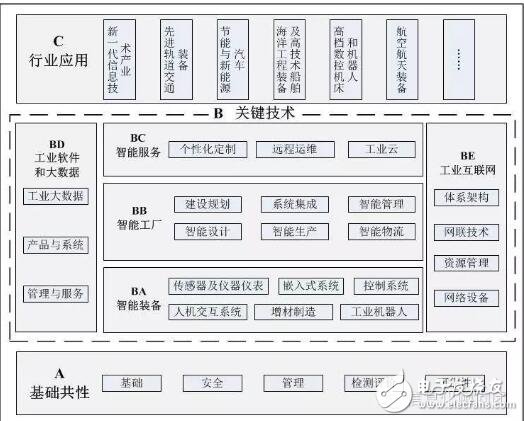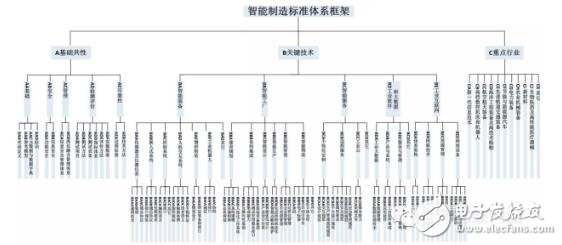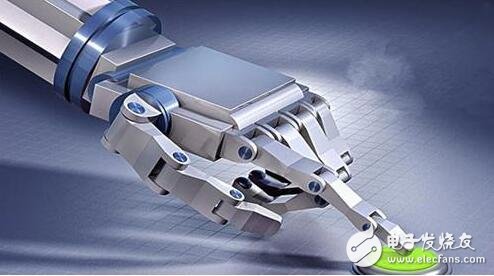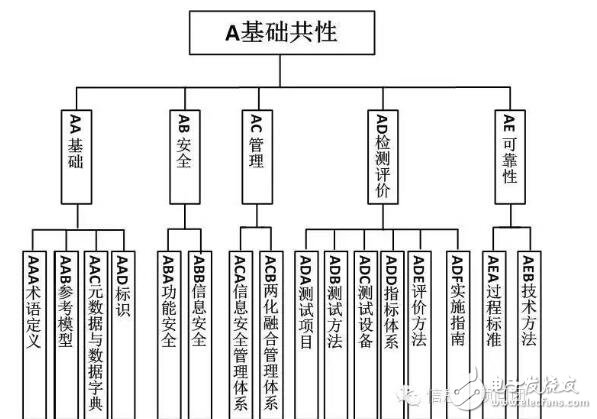The intelligent manufacturing standard system is the main direction of the determination of "Made in China 2025". At present, intelligent manufacturing is accelerating under the support of China's policy promotion, financial support and market demand: the preliminary construction of the intelligent manufacturing standard system has gradually formed the "region, The good atmosphere of industry and enterprise synergy, system integrators, equipment manufacturers, research institutions, and users.
At the National Intelligent Manufacturing Pilot Demonstration Experience Exchange Meeting held recently, the Minister of Industry and Information Technology, Miao Wei, revealed that since the Ministry of Industry and Information Technology jointly launched the special project of intelligent manufacturing in June last year, it has invested 2.15 billion yuan in central government funds and supported 93 key projects. This year, the two departments continued to implement smart manufacturing special projects, and 133 key projects have been established. At the same time, the integrated application of intelligent manufacturing key technology and equipment will be accelerated, and the system will promote intelligent manufacturing.
It is understood that the 133 key intelligent manufacturing projects initiated this year are distributed in 25 provinces and autonomous regions across the country. It is estimated that the state will allocate 5.2 billion yuan, which is close to 1.5 times that of the central government's smart manufacturing specials last year. Since the implementation of the special intelligent manufacturing system, it not only supported the construction of the national intelligent manufacturing standard system, but also improved the self-control and controllability level of intelligent manufacturing equipment, and promoted social investment of 10 billion yuan.
At present, the vast number of manufacturing enterprises in China's Yangtze River Delta and Pearl River Delta have spontaneously carried out "machine substitution" to accelerate the transformation to digital, network and intelligent. According to the preliminary statistics of Jiangsu, Guangdong, Zhejiang and other provinces, the annual investment in fixed assets of the manufacturing industry has reached 1 trillion yuan, of which digital and intelligent equipment account for a considerable share, and the proportion is getting higher and higher. "China has become the world's largest market for intelligent manufacturing demand." Xin Guobin, deputy director of the Ministry of Industry and Information Technology, said that it is necessary to take the initiative to make good use of this huge market demand and to develop the intelligent manufacturing equipment industry with its own brand as the focus of "Made in China 2025". The focus is on actively promoting pilot demonstrations and realizing large-scale engineering applications of self-owned brand intelligent manufacturing equipment and solutions.
The comprehensive standardization test verification of intelligent manufacturing and the application of new modes of intelligent manufacturing are the two key directions for the special support of smart manufacturing in China. In recent years, China has made remarkable achievements in intelligent manufacturing. Key technologies and equipment for intelligent manufacturing have achieved important breakthroughs. High-end CNC machine tools, industrial robots, intelligent instrumentation and other fields have developed rapidly. Information and communication technologies are changing with each passing day, and network infrastructure construction is on the rise. Steps. However, compared with manufacturing powers, China still has a big gap in smart manufacturing. Manufacturing mechanization, electrification, automation, and informationization coexist. The development of different regions, different industries, and different enterprises is very uneven. Some outstanding problems urgently need to be resolved.
It is understood that during the "Thirteenth Five-Year Plan" period, China will focus on the "five to thirty-five" key tasks, namely: to capture high-end CNC machine tools and industrial robots, additive manufacturing equipment, intelligent sensing and control equipment, intelligent detection and assembly equipment, Five key technical equipments, such as intelligent logistics and warehousing equipment, consolidate the three basic foundations of intelligent manufacturing standards, core supporting software and industrial Internet, foster and promote discrete intelligent manufacturing, process-based intelligent manufacturing, network collaborative manufacturing, large-scale personalized customization, and remote Five new modes of operation and maintenance services, promote the integration of intelligent manufacturing complete sets of equipment in the ten key areas, and continue to promote the intelligent transformation of traditional manufacturing.
It is reported that in the next step, China will speed up the implementation of the revision of 100 common manufacturing basic standards and industry application standards, and promote the system through intelligent manufacturing engineering, intelligent manufacturing specialization, pilot demonstration, standard system construction, industrial Internet and other measures. The basis of intelligent manufacturing development, the construction of a new manufacturing system, and the construction of a strong manufacturing country.

The intelligent manufacturing standard architecture includes three parts: “A basic commonalityâ€, “B key technology†and “C key industryâ€, which mainly reflects the composition relationship of each part of the standard system. The intelligent manufacturing standard architecture diagram is shown in Figure 5.

Figure 5 Intelligent Manufacturing Standard Architecture
Specifically, the A basic commonality standard includes five categories: basic, security, management, test evaluation and reliability. It is located at the bottom of the intelligent manufacturing standard architecture diagram. The basic common standard developed by it supports the upper dashed frame of the standard architecture diagram. Internal B key technical standards and C key industry standards; BA intelligent equipment standards are located at the bottom of the B key technical standards of the intelligent manufacturing standard architecture diagram, and are most closely related to the actual production of intelligent manufacturing; above the BA intelligent equipment standard is BB intelligence Factory standard is the comprehensive integration of intelligent manufacturing equipment, software and data. The standard field plays an important role in the intelligent manufacturing standard architecture diagram. The BC intelligent service standard is located at the top of B key technical standards, involving intelligent manufacturing. Standard research on new models and new formats; BD Industrial Software and Big Data Standards and BE Industrial Internet Standards are located at the far left and right of the B key technical standards of the Smart Manufacturing Standards Architecture Diagram, respectively, and other key technologies throughout B 3 fields (BA, BB, BC), open up the physical world and the information world, The production-oriented manufacturing transformation to service-oriented manufacturing; C key industry standards are located at the top of the intelligent manufacturing standard architecture diagram, facing the specific needs of the industry, refining and landing the A basic common standards and B key technical standards, guiding the promotion of various industries Intelligent manufacturing.
The intelligent manufacturing standard system framework is mapped down from the intelligent manufacturing standard architecture, and is the basic component of the intelligent manufacturing standard system. The intelligent manufacturing standard system framework includes three parts: “A basic commonalityâ€, “B key technology†and “C key industryâ€. The framework of the intelligent manufacturing standard system is shown in Figure 6.

Figure 6 Intelligent Manufacturing Standard System Framework (mobile phone crossover)
Intelligent Manufacturing Standard System Construction GuideThe Construction Guide clarifies the general requirements, construction ideas, construction contents and organizational implementation methods for building an intelligent manufacturing standard system. The reference model of the intelligent manufacturing standard system is established from three dimensions: life cycle, system level and intelligent function. The framework of the intelligent manufacturing standard system includes five basic common standards such as “basicâ€, “safetyâ€, “managementâ€, “test and evaluation†and “reliabilityâ€, and “smart equipmentâ€, “smart factory†and “smart serviceâ€. Five key technical standards such as “Industrial Software and Big Data†and “Industrial Internet†and application standards in different industries. For the convenience of enterprises, the “Building Guide†is based on “basic commonality†for existing smart manufacturing related standards. “Key Technologies†and “Key Industries†were sorted.
The “Building Guide†focuses on the manufacturing advantages and the transformation and upgrading of traditional industries. In accordance with the principle of “commonity first, urgent use firstâ€, it mainly focuses on cross-domain and cross-industry system integration standards, through the coordination of standard resources and optimization standards. The structure focuses on solving the basic bottlenecks such as data integration and interconnection encountered in the current advancement of intelligent manufacturing. The “Building Guide†adopts a rolling revision system and is released after revision in 2-3 years.
1. Basic principles
Overall planning, classification and policy. Coordinate standard resources, optimize the standard structure, and systematically sort out relevant domestic smart manufacturing standards to meet the needs of intelligent manufacturing development. Focusing on the 10 key development areas proposed by "Made in China 2025", taking into account the transformation and upgrading of traditional industries, combining the development level of different industries and the characteristics of the industry, forming application standards for key industries of intelligent manufacturing, and establishing a standard system for connecting and coordinating.
Cross-border integration, eager to go ahead. According to the characteristics of intelligent manufacturing, cross-domain, cross-industry, high integration, system integration, etc., priority is given to the basic commonality of data interfaces, communication protocols, semantic identifiers, etc. for the key bottlenecks such as data integration and interconnection encountered in the current intelligent manufacturing work. standard.
Based on national conditions, open cooperation. Combining the characteristics of China's intelligent manufacturing standards and the imbalance of industry development, fully consider the applicability of standards, strengthen the standardization and industrialization of independent intellectual property rights, strengthen communication with advanced manufacturing countries and international standardization organizations, and timely China The independent intellectual property rights standards have risen to international standards. At the same time, the international standards that are suitable for the development needs of China's manufacturing industry have been transformed into national standards in a timely manner, and an intelligent manufacturing standard system with good compatibility and openness has been established.
2, construction goals
According to the current development status of the manufacturing industry, the intelligent manufacturing standard system will be completed and gradually improved within five years, and will be completed in two phases: the first phase (2016-2017) mainly solves the problem of the integration of the standard system and the lack of basic standards. The second phase (2018-2020) mainly addresses the issue of standard system improvement and standard application in the whole manufacturing sector. specifically is:
By 2017, an intelligent manufacturing standard system will be initially established. Formulate more than 60 key standards for intelligent manufacturing, and formulate basic common standards such as reference models, term definitions, logo analysis, evaluation indicators, and other key technical standards such as data formats and communication protocols, in accordance with the principle of “common preemptive and urgent use firstâ€. Formulate smart manufacturing standards for key industries, and take the lead in making breakthroughs in the top ten key areas of "Made in China 2025". Promote the rise of national standards for intelligent manufacturing to become an international standard, and the standard application level and internationalization level have been significantly improved.
By 2020, a relatively complete system of intelligent manufacturing standards will be established. More than 500 intelligent manufacturing standards have been revised, and basic common standards and key technical standards have been fully covered. Intelligent manufacturing standards have been widely applied in enterprises, promoted and applied in all areas of manufacturing, and promoted the improvement of China's intelligent manufacturing level. The international competitiveness of manufacturing standards has increased significantly.
3. Construction ideas
The national intelligent manufacturing standard system was completed in accordance with the "three-step method" principle.
The first step is to study the various intelligent manufacturing application systems, extract their common abstract features, and construct a three-dimensional intelligent manufacturing system architecture consisting of life cycle, system level and intelligent functions, thereby defining the connotation and extension of intelligent manufacturing standardization, and identifying intelligent manufacturing. Existing and missing criteria, recognizing the overlapping relationship between existing standards;
In the second step, based on the in-depth analysis of the standardization requirements, the logical relationship of each dimension of the intelligent manufacturing system architecture is integrated, and the plane composed of the life cycle dimension and the system level dimension of the intelligent manufacturing system architecture is mapped from top to bottom to the intelligent function dimension. Five levels form five key technical standards: intelligent equipment, intelligent factories, intelligent services, industrial software and big data, industrial Internet, etc., together with basic common standards and key industry standards constitute the intelligent manufacturing standard architecture;
In the third step, the intelligent manufacturing standard system is decomposed and refined, and then the intelligent manufacturing standard system framework is established to guide the construction of the intelligent manufacturing standard system and the related standards.

4. Construction content
The basic common standards mainly include five parts: basic, security, management, test evaluation and reliability, as shown in Figure 7.

Figure 7 Basic Common Standard Subsystem
1. Basic standards
The basic standards mainly include four parts: term definition, reference model, metadata and data dictionary, and identification.
The term definition standard is used to unify the concepts related to intelligent manufacturing and provide support for the formulation of other parts of the standard;
Reference model standards are used to help all parties understand and understand the objects, boundaries, hierarchical relationships and internal connections of intelligent manufacturing standardization;
The metadata and data dictionary standards are used to specify the metadata naming rules, data formats, data models, data elements and registration requirements, and data dictionary establishment methods involved in the design, production, and circulation of intelligent manufacturing products, which are generated for all aspects of intelligent manufacturing. The foundation of data integration and interaction sharing;
The identification standard is used to uniquely identify and analyze various types of objects in intelligent manufacturing, and to build an intelligent manufacturing identification system that is compatible with the existing identification coding system of the manufacturing enterprise and can meet the requirements of intelligent manufacturing development such as IP and intelligent devices.
2, safety standards
Security standards mainly include functional security and information security.
Functional safety standards are used to ensure that the safety control system performs its safety functions correctly in the event of a hazard, thereby avoiding personal injury, environmental damage and economic loss due to equipment failure or system function failure, including functional safety requirements and functional safety implementation. Management and other two parts. The information security standard is used to ensure that the information system is not damaged, altered or leaked due to accidental or malicious reasons. The system can run continuously and reliably, including software security, device information security, network information security, data security, and information. Five parts, such as security protection.
3. Management standards
The management standards mainly include the information security management system and the two-integrated management system.
The information security management system standard is used to focus on the key aspects of manufacturing according to the characteristics and needs of intelligent manufacturing in various industries, and to develop intelligent manufacturing information security management standards, including management standards and security supervision. The two-in-one integration management system standard is used to guide relevant enterprises to establish innovative management mechanisms, maintain sustainable competitive advantages, and improve the two-in-one process management mechanism through standardization work, including requirements, foundations and terminology, implementation guidelines, evaluation specifications, audit guidelines, etc. Five parts.
4, testing evaluation criteria
The test evaluation criteria mainly include six parts: test items, test methods, test equipment, indicator system, evaluation method, and implementation guide.
Test project standards are used to guide the scientific sequencing and effective management of intelligent manufacturing equipment and systems during the testing process. The test method standard is used to develop standards including test content, methods, steps, processes, calculation analysis, etc. for different types of intelligent manufacturing equipment and systems. The test equipment standard is used to ensure the stable operation of the test equipment and the accuracy and reliability of the test indicators during the quality of the intelligent manufacturing equipment and system testing. The indicator system standard is used to evaluate various intelligent manufacturing application areas, application enterprises and application projects, and promote enterprises to continuously improve the level of intelligent manufacturing. The evaluation method standard is used to guide intelligent manufacturing enterprises to carry out project evaluation and develop an intelligent manufacturing evaluation index system. The implementation guideline standard is used to guide the implementation of the smart manufacturing project evaluation process.
5, reliability standards
Reliability standards mainly include two parts: process and technical methods.
The process standard is used to analyze the reliability requirements, risk management and life cost of intelligent manufacturing systems, including the reliability management of intelligent manufacturing systems, fault prediction of intelligent manufacturing equipment, and comprehensive management of health management and intelligent manufacturing systems. Technical method standards are used to guide the reliability analysis and evaluation of intelligent manufacturing systems and the reliability design and test verification of intelligent equipment.
10-inch tablet devices have greatly surpassed netbooks in terms of entertainment, including reading, games, and audio-visual enjoyment. In other respects, the basic operation of the 10-inch tablet computer built on the touch screen ensures that the application of the tablet computer can be well realized, and its operation performance is closer to that of a smartphone.
1.In appearance, the 10-inches tablet computer looks like a large-screen mobile phone, or more like a separate LCD screen.
2.In terms of hardware configuration, the 10-inches tablet computer has all the hardware devices of a traditional computer, and has its own unique operating system, compatible with a variety of applications, and has a complete set of computer functions.
3.The 10-inches tablet computer is a miniaturized computer. Compared with traditional desktop computers, tablet computers are mobile and flexible. Compared with Laptops, tablets are smaller and more portable
4.The 10-inches tablet is a digital notebook with digital ink function. In daily use, you can use the tablet computer like an ordinary notebook, take notes anytime and anywhere, and leave your own notes in electronic texts and documents.
10 Inches Tablet Pc,Tablet Pc Android,10 Inch Quad Core Tablet,Tablet 10 Inch
Jingjiang Gisen Technology Co.,Ltd , https://www.jsgisentec.com